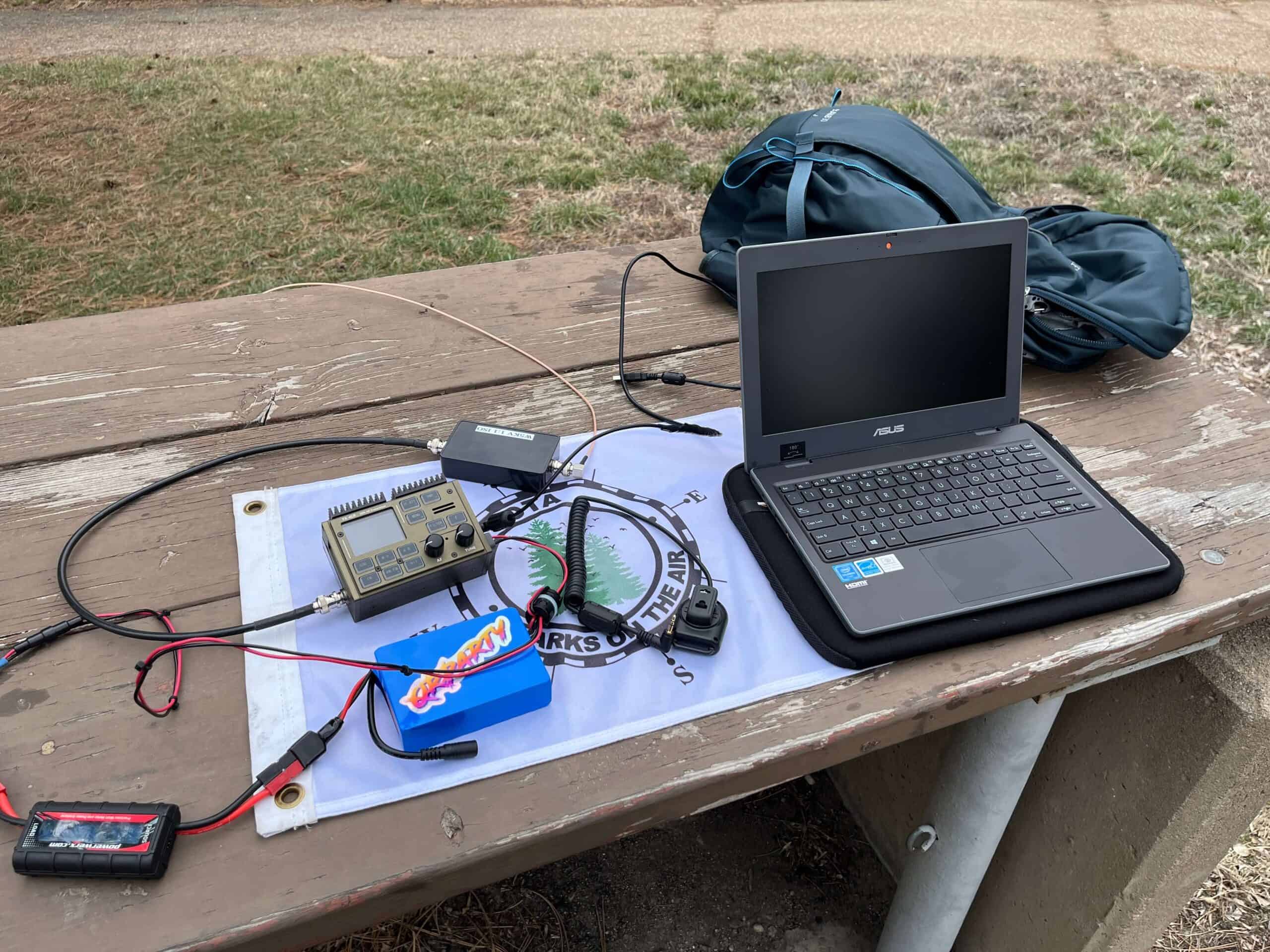After an early shift at work, I embraced the opportunity to visit Cherry Creek State Park, the busiest of Colorado’s state parks. Situated just a short distance away, it’s my go-to spot for some much-needed leg stretching, especially amidst the demanding project at work—migrating from SAP ECC to SAP S4/HANA, a task that’s been anything but a breeze. Escaping to the outdoors today was a welcome respite.
Preparation is key, so before heading out, I checked my FX-4CR radio, gearing up for my first exploration into digital modes with this equipment. Ensuring the custom-made cable provided both CAT control and proper audio routing was crucial, and luckily, everything functioned perfectly. Navigating the somewhat outdated FX-4CR manual, I noted a few discrepancies: DIG-U has been simplified to DIG, and selecting “XON/XOFF” is essential for managing data flow—something the manual overlooks. The ‘ALC’ setting seemed absent, presumably auto-adjusted in DIG mode. Despite seeing online demonstrations pushing the radio to 10-20 watts, the manufacturer’s advice to stick to 5 watts is prudent, given the unit’s quick overheating tendency. The heat sinks, even without conductive paste, effectively dissipate heat—a testament to their design, though a hotter climate might necessitate additional cooling measures.

Historically, portable digital activations have introduced RF interference with my laptop. However, introducing a 1:1 isolation transformer to my setup eradicated such issues, marking my first interference-free digital activation. It’s baffling why such an efficient radio hasn’t been picked up for mass production in the U.S. I used a 20m monoband end fed half wave (EFHW) by QRP guys for the antenna, in a vertical configuration.

My outing resulted in 28 QSOs on FT8 & FT4 within an hour, a testament to the radio’s capabilities, even if my 5-watt output meant often retransmitting to ensure I was heard, primarily across North America. Despite the power limitations, the effectiveness of such a setup in a portable context was clear, with the battery consumption impressively low.

Looking ahead, I’m intrigued by the prospect of operating FT8/FT4 from a SOTA summit—an uncommon endeavor in the SOTA community, but an exciting challenge. My setup, tipping the scales at just over 5 pounds, offers potential for even greater portability by switching to a lighter computing device. This adventure has reignited my passion for portable digital radio, with plans to delve into the Bluetooth capabilities of the FX-4CR, especially considering its noted compatibility with Android, as opposed to Windows. More experimentation lies ahead.
73
W5KV
